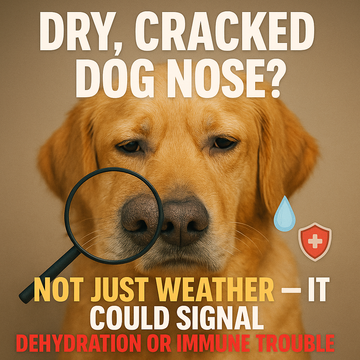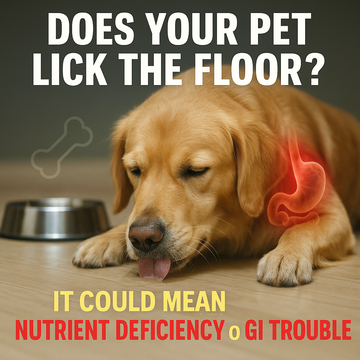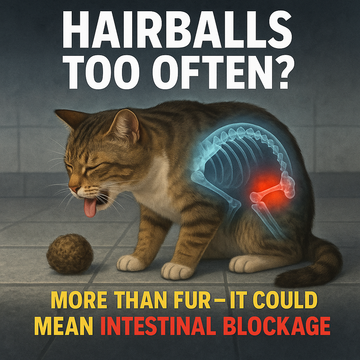Many owners see a dry, cracked nose and assume it’s “just the weather” or “not enough water.” The truth? Persistent or severe nose dryness often signals underlying health issues. From mild dehydration to immune disorders, even keratinization problems or lupus, tiny changes on the nose may hide serious risks. Don’t dismiss it as “bad weather”—your dog might be silently asking for help.
1) Normal vs. Abnormal

-
Normal: Dog noses may dry briefly during sleep, then moisten after licking.
-
Abnormal: Nose remains dry, cracked, discolored, crusty, or bleeding.
2) Common Causes

-
Dehydration: Insufficient water or post-exercise lack of fluids.
-
Sunburn: Light-colored breeds prone to nose sunburn.
-
Allergies: Triggers include plastic bowls, pollen, food.
-
Immune disorders: Such as discoid lupus erythematosus (DLE), pemphigus.
-
Hyperkeratosis: Excess keratin buildup → thick crusts.
3) Warning Signs to Watch

-
Nose shows persistent discharge or bleeding.
-
Surrounding skin ulcers or discoloration.
-
Dog becomes lethargic, loses weight.
-
Paired with excessive drinking or urination → possible kidney disease.
4) What Can Owners Do?

- Check hydration: Ensure daily fresh water, add wet food if needed.
-
Change bowls: Avoid plastic; use stainless steel or ceramic.
-
Sun protection: Apply pet-safe sunscreen on light-colored dogs outdoors.
-
Moisturize nose: Use pet-safe balms like Vaseline or coconut oil, never human meds.
-
Vet visit: Cracking with bleeding or abnormal behavior needs immediate exam.
Final Tips
A dog’s nose is a health barometer. Brief dryness is normal, but persistent cracking must not be ignored. Remember: hydration, diet, sun protection, and regular vet checks keep this small but vital window of health safe.
We share fresh dog/cat care tips every day—follow us at https://pawcassopet.com/




